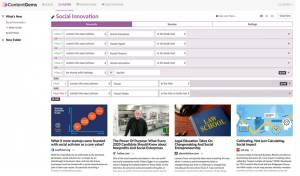IP multimedia subsystem (IMS), the integrated network of telecommunication carriers, facilitates usage of IP (Internet Protocol) for packet communications in all known ways over wireless or landline. Some of these communications include traditional telephony, fax, e-mail, internet access, web services, Voice over IP (VOIP), instant messaging, videoconference sessions, and video on demand. Developed originally at the end of 1990s, IMS was used for deployment in mobile telecommunications network around the world, interfacing with the public switched telephone network (PSTN).
Authentication of Internet-based IMS Services needs Ensuring Appropriate Protection Levels
Cyber-attacks and easy data hacking possibility increases tremendously when systems are connected to internet, risk that is not related to internal security systems. The enterprises are therefore unsure in using internet-based IP multimedia subsystem services to prevent exposure of their applications to the internet. Authentication of these services needs ensuring appropriate levels of protection along with strong multifactor security options. Majority of IMS services do not have strong security services, making it convenient for cyber criminals in accessing these internet-based services easily and hacking confidential or personal information of users. This is estimated to restrain the growth of the market in the upcoming years.
Unprecedented convenience for individual and business users is guaranteed by IMS in its ideal form. In its recent report, Future Market Insights (FMI) estimates that the global IP multimedia subsystem market is estimated to exhibit a double-digit CAGR through 2026. IMS offers network operators to expand their services’ portfolio including multimedia communication and integrated voice services. This further helps in collaborating multiple media, multiple points of access, and multiple modes of communication into a single network, which in turn is driving the adoption of IMS services by a number of network operators. IP multimedia subsystem enables users to choose the right mode of communication-based on real-time, helping them to control the way and time of their communication.
Complete Convergence of All Telecommunication Forms over IP may never be Realised
IMS services allow devices such as smartphones and laptops in accessing services through various networks including broadband, Wi-Fi, cellular, etc. In addition to rising utilization of smartphones, people around the world use multimedia applications to improve their communications. IP multimedia subsystem services allow users to utilize services including push-to-talk, multimedia conferencing, instant messaging and so on, along with maintaining services’ quality without any increase in costs.
Expandability & flexibility provided by IMS services might enable vendors to introduce new services online, owing to the advent and evolution of these services without compelling subscribers to frequently change the carriers. Small operators are not much willing to embrace IP multimedia subsystem paradigm, compared to huge carriers. It is believed that the complete convergence, or universal availability, of every telecommunication form over IP may be decades away, or, may never be realized.
IMS Core Network Improve System Performance through Dynamic Allocation of Resources
Virtualisation-based cloud platforms for IP multimedia subsystem core network, coupled with disaster recovery policy as well as novel load balance, help in improving performance of systems via dynamic allocation of resources on the basis of current load. This cloud infrastructure recovers from disasters just in seconds by using live migration of virtual machines. The cloud infrastructure offers services of load balancing, dynamic resource allocation, and disaster protection.
Virtualisation in telecommunication sector has gained immense prevalence in the recent past. Moving instances of operating systems from a physical host to another is a critical characteristic of this technology. This feature offers network administrators an opportunity for resolving crucial problems in short period of time in software & hardware. Introducing migration technique in IMS architecture has resolved overload problems, guaranteeing Quality of Service (QoS) provision to IMS clients.
Business & Finance Articles on Business 2 Community(50)








